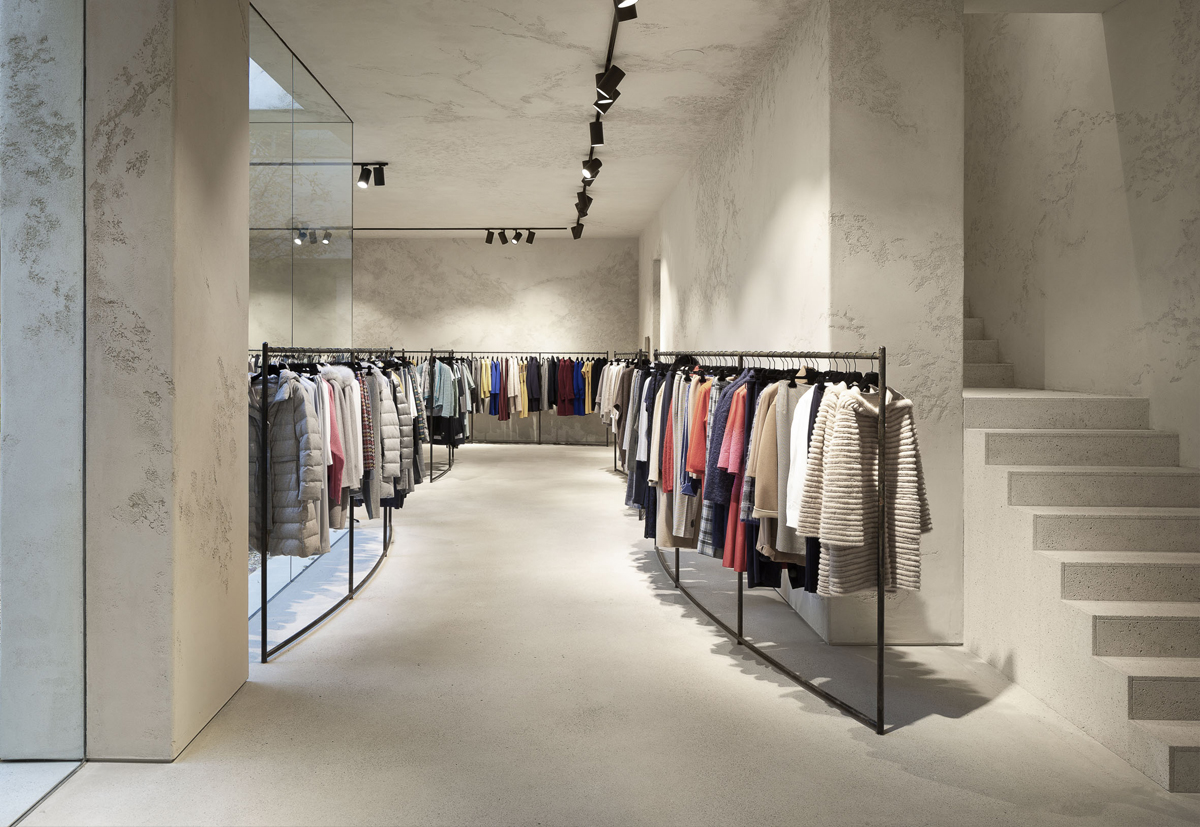
Sound Materials
Architecture shapes sound – and sound shapes architecture. Clay plasters allow designers and architects to work with sound-absorbing materials in novel and exciting ways.
Clayworks clay plasters absorb and soften acoustics. As a wall & ceiling finish, they can be used to reduce noise and reverberation, inform our sense of space, and improve communication and wellbeing in everyday environments. There are increased performance benefits with our thicker plasters, the Demi and Rustic Finishes. Galleries, museums, performance spaces, music studios, and workspace designers seek out clay plasters to contribute to a peaceful, quiet space with minimal distraction from others.
‘Whether heard with the ears or felt with the body, sound envelops us in the rich murmur of being’ – Ellen Lupton, The Senses: Design Beyond Vision.

Princess Project, Antwerp.
Sound can help mould a space. With the help of materials and textures, architects can create spaces that will tend to reflect, modify, absorb, channel, or amplify sound. A seamless finish, clay can be used across all walls and ceilings.

Princess Project, Antwerp.
Clayworks Clay Plaster Acoustic Data
Endless variables affect the acoustic performance of clay plasters. We have had accredited acoustic tests conducted to produce raw data for building physicists and acoustics engineers.
Sound Absorption Coefficient results range from 0.00 (no absorption) to 1.00 (perfect absorption). As a general rule, hard, heavy materials are poor absorbers whilst soft light materials are good absorbers.
Laboratory tests show the results for the following Clayworks Finishes:
- 15 – 6mm (Demi Rustic) Clayworks on Gypsum Backing Board
- 20 – 10mm (Rustic) Clayworks on Gypsum Backing Board
- 25 – 10mm (Rustic) Clayworks on Clayworks Clay Backing board.
As a benchmark, a concrete wall with float plaster or render finish would be expected to have an approximate aw of 0.00 to 0.05. The actual performance will also depend on the specific product and installation details and multiple other variables.

Storey Studio.
Sound in Workspace Design
Acoustic conditions in the workplace are known to affect productivity and workplace wellness. Noise interruptions and background noise can contribute to stress, distraction and reduce concentration. The International Well Being Institute recognises sound as a fundamental concept in building design to bolster occupant health and wellbeing. It awards credits for its Well Standard for creating spaces that take into account sound absorption optimisation strategies.
Designing buildings to provide comfortable, controlled acoustic environments will typically lead to decisions that increase operational energy and embodied carbon due to material choices. But this need not be the case. The use of natural materials such as clay plasters, backing boards, or insulation made of natural products including wood, clay, straw or jute can help create a low-carbon approach to acoustic design.
Clayworks Clay Plasters have the lowest embodied carbon of all interior finishing materials other than wood.
Dr Anthony Chilton, Senior Partner and Acoustics Leader at Max Fordham, suggests several strategies to the acoustic design of a building that can help maximise a project’s net-zero carbon potential. These include:
- Prioritise the use of sustainable acoustic finishes. Aim to use sustainable materials and to minimise their quantity by using them efficiently.
- Work collaboratively with other consultants to achieve solutions that work well. Valuable acoustic solutions need to be integrated into the building’s design. “Bolt-on” measures tend not to be efficient and may have unintended adverse effects.
- As well as considering carbon emissions, sustainable acoustic design must also seek to provide high quality acoustic environments that maximise occupant wellbeing and create spaces for people to enjoy throughout the life of the building.

Clayworks Ceiling at the Old Vic Theatre, London.
Acoustics for Wellbeing
Clay is untreated with any formaldehyde containing materials and is naturally fireproof. It contains no fire retardants. Hence it is free of VOCs, formaldehyde, chemicals, and it does not off-gas.
Clay helps to regulate indoor air humidity, a critical factor for indoor air quality.
The use of clay plasters minimises glare as they are soft and raw, absorbing bright lights.
See here for more information.

